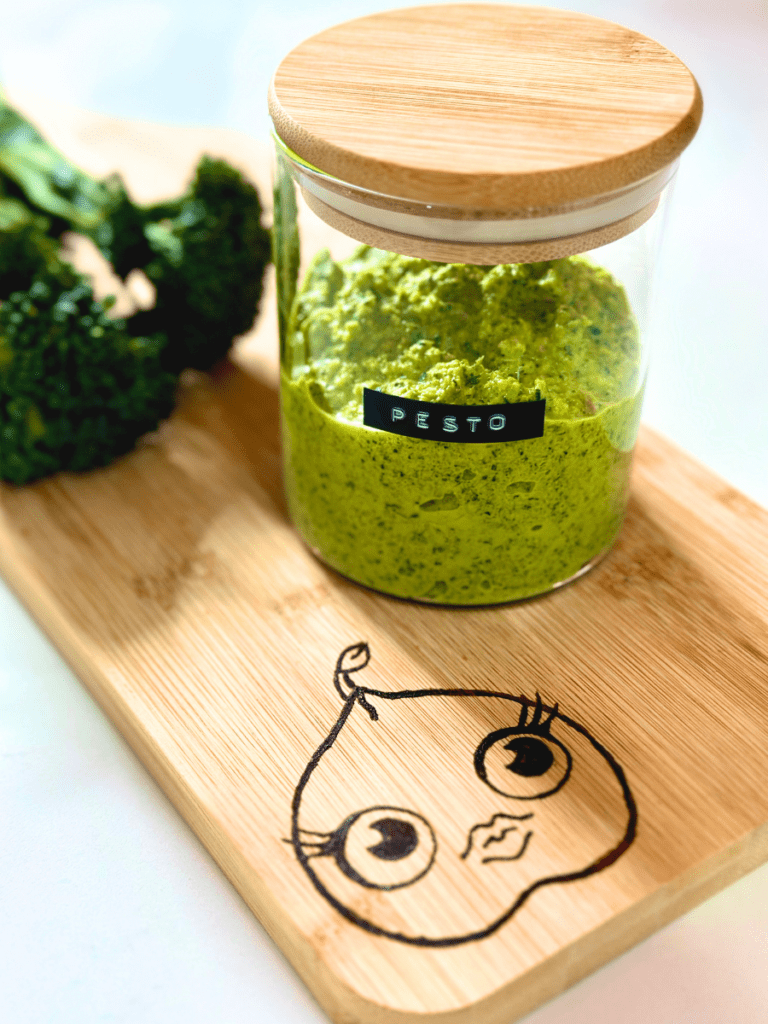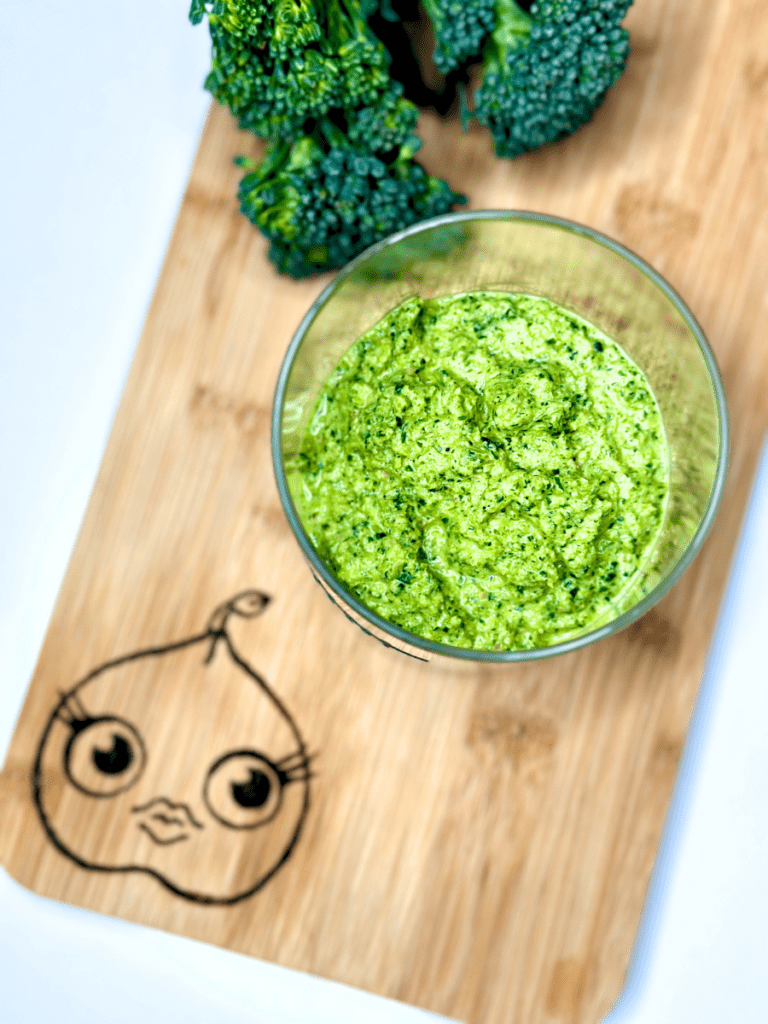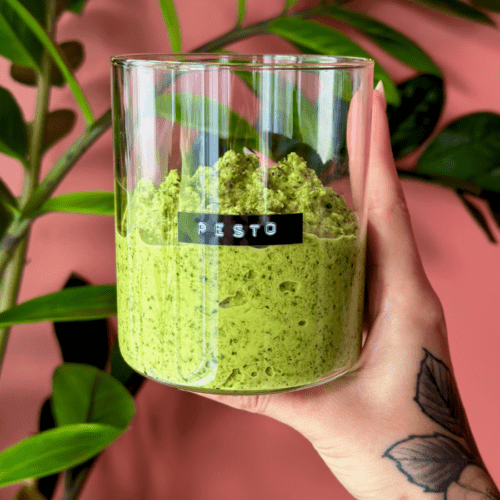This Broccoli Basil Pesto was born out of sheer necessity but magic was created with this recipe. Have you ever looked in your fridge hoping to find something and after scouring through all the shelves, you realize you were mistaken? Well, I had my heart set on a delicious pesto pasta only to find that they main star, the pesto, seemed to be missing from fridge shelves. Rather than pivot and make something else, I gathered some items and began to throw together a surprisingly delicious and eco-conscious pesto recipe!

Broccoli Basil Pesto with a Plot Twist
Pesto has long been a staple in many kitchens, prized for its vibrant flavour, versatility, and ability to elevate simple dishes. While keeping to some of a pesto’s traditional nature, this one includes basil. Aside from that, out of sheer necessity, I made some adjustments and they made this pesto shine.
Sunflower Seeds:
Most pesto recipes include pine nuts and that’s where I made my first swap. Pine nuts, while delicious, are incredibly expensive. I’ve found sunflower seeds to be the perfect substitute and a much more budget-friendly option.
Broccoli Stalks:
Looking for the something green aspect that you expect in a pesto, I didn’t have much to work with in my fridge. But then I saw the broccoli sitting in my fridge. I had plans for the broccoli heads but realized that I could use the broccoli stems, so I decided to use those as my something green. Not only do the broccoli stems make for a delicious pesto, but they also make it a more eco-conscious variation by using the often discarded broccoli stalks.

Why Use Broccoli Stalks for Your Basil Pesto?
Despite the broccoli stalks being a hail mary for my pesto predicament, there are many fantastic reasons to use broccoli stalks for a pesto recipe. When cooking with broccoli, many of us instinctively toss out the stalks, focusing on the florets. But broccoli stalks are not only edible, they’re packed with nutrition—fibre, vitamins C and A, and a mild, earthy flavour that’s perfect for a pesto sauce. Using the stalks in your pesto is a great way to cut down on food waste while stretching your ingredients further, making it an ideal choice for eco-conscious home cooks.
Plus, the subtle sweetness and creaminess of the broccoli stalks blend beautifully with basil, creating a pesto that’s both unique and comforting. You’re not just repurposing a leftover—you’re adding complexity and texture to a classic sauce.
Quick and Easy
One of the best things about broccoli basil pesto is how quickly it comes together. Whether you’re tossing it into a pasta dish, spreading it over toast, or using it as a veggie dip, this recipe is a time-saver on busy weeknights.
Option: You could steam or blanch your broccoli stalk but I skipped that step and just added the stem right into my food processor. It worked fine.
Broccoli Basil Pesto: A Taste of Sustainability
Incorporating more sustainable cooking habits into your routine doesn’t have to be a daunting task. Using ingredients like broccoli stalks not only reduces food waste but also encourages creativity in the kitchen. With each bite of this creamy, zesty broccoli basil pesto, you’ll be savouring a more conscious approach to food, one that honours both flavour and the planet.
Next time you’re chopping broccoli, think twice before tossing those stalks. Instead, embrace them as the star of your next pesto, proving that a little creativity can turn kitchen scraps into something delicious.
If you’re looking for other sauces and dressings, check out these!
I hope you enjoy this Broccoli Basil Pesto! If you make it, please leave a comment below (it helps others to find the recipe). As always, please feel free to share your creations with me! Be sure to tag me on Instagram or Pinterest so that I can see your yummy dishes.

Broccoli Basil Pesto
Print Recipe Pin RecipeIngredients
- 1 cup broccoli stems, chopped
- ½ cup fresh basil
- 3 tsp sunflower seeds
- 3 tbsp nutritional yeast
- 3 garlic cloves
- 3 tbsp extra virgin olive oil
- ¼ tsp salt
- 2 tbsp lemon juice
- 3-6 tbsp water, adjust as needed
Instructions
- Combine all ingredients in a food processor or blender and mix, adding water as needed to reach desired consistency.
- Adjust salt to taste.

Heads up: My posts may contain affiliate links. If you buy something through one of those links, I’ll get a small commission. But don’t worry – you won’t pay any extra for that. It just helps support me so I can continue making content for you 💕. Thanks!
We want to hear from you!